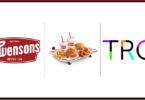Every Chief Marketing Officer worth their salt knows the importance of having a brand stand apart from the competition. To be unique in the eyes of the consumer and get recognized for it. After all, isn’t that the main purpose of “branding?” Why, then, from category to category, does so much advertising feel the same, look the same and say the same thing regardless of the logo that sits on their ads? It’s not because the people behind the work aren’t smart, and, goodness knows, brand teams don’t lack data and information. No, the reason companies keep churning out marketing wallpaper is because they continue to play by the unwritten rules or conventions of their categories.
Old Habits Are Hard to Break
There are some basic rules of engagement in every category. Best practices such as communicating who you are, what you do, and, more importantly, why a customer should care are foundational to success. How you go about communicating these things is where the trouble usually starts. Brands, like people, find comfort in the familiar. Being safe and comfortable is habit-forming. Eventually, habits feel less like choices and more like mandates. Say hello to the self-imposed status quo.
Consider this experience from my agency: We did an exercise where we put together a reel of work for a restaurant client and the client’s direct competitors. We edited the reel to cover up the logos, leaving the music, voice-over, and visual narrative alone. Aside from a few subtleties, all of the work looked and sounded so alike that the client had a really hard time telling them apart — and they live and breathe the category. Imagine a consumer who pays considerably less attention trying to differentiate them.
If you’re not sure if you’re stuck in the status quo, try the same exercise yourself. If your brand doesn’t clearly stand out, this may be your wake-up call.
Rule Breaking 101
The adage of a problem well defined as being half solved definitely applies here. Unless you take the time to identify all the conventions in your category, it’s very difficult to know where to focus your creative energy. The most important outcome of an audit is understanding which “rules” are there for a reason and which are simply lazy, enshrined habits. Pay close attention to elements like common themes (e.g., features and benefits-focused, lifestyle, etc.), language and phrasing, use of voiceovers and music styles, energy, tone, and even color palettes. Breaking some (or all) of these conventions is a great place to start.
Now ask yourself what you don’t see and determine if it’s something your consumer could (or should) care about. For instance, suppose you’re a car battery company, and most of the category is talking about functional benefits. They spend millions talking about power and cold-cranking amps. Data tells us these days, most consumers don’t even know where the battery is in their car. Getting them to care about a bunch of industry jargon is a stretch. You know what the research says they care about? Getting to where they want to be and the fear of missing out if they can’t. Instead of following the conventions of the category, focusing on the customers’ need for dependability and the emotional implications when that doesn’t happen is game-changing. I saw this firsthand in our work for Interstate Batteries.
There’s Power in Emotion
Loyalty isn’t rational. That isn’t to say that rational arguments can’t be compelling. Unique features can certainly drive interest and sales. Until a competitor comes along and does it faster, better, and cheaper. Which they most certainly will. However, if your point of difference is rooted in satisfying an emotional need…well, now you’re on to something.
Emotional connections are sticky because they’re rooted in caring. Caring builds trust, and trust builds loyalty. I would argue that brands in the most commoditized, dull, attribute-laden categories can achieve separation by simply changing the rules of the game and finding an emotional point of difference for their brand. Look no further than Old Spice, Dollar Shave Club, and, of course, Apple.
Playing to win vs. playing not to lose.
This is arguably a CMO’s greatest balancing act — do what it takes to grow the brand, but don’t screw it up. True brand differentiation involves taking a few calculated risks, and that can be scary to an organization. Very few C-suite executives get fired for playing it safe. But for ambitious brands in competitive environments, status-quo is a silent killer. Giving your brand the space to stand apart doesn’t need to be radical, controversial, or scary if you do your homework and meet the consumers’ emotional needs in an unexpected yet authentic place. Your brand will be healthier, seem more interesting, and garner greater loyalty than your competitors.
At the end of the day, this isn’t about fear or bravery or risk. It’s about doing the right thing for your brand. The upside is simply too substantial to ignore, and the downside too expensive to contemplate.










